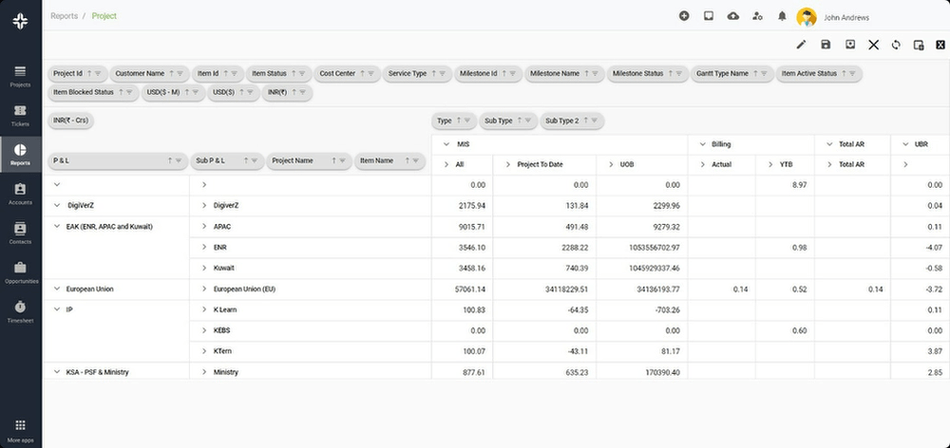Home » PSApedia
Risk Register
Explore Insights on Risk Register. Identify, Assess, and Mitigate Risks.

What is a Risk Register?
A Risk Register, often an essential component in Professional Service Automation (PSA), is a tool used for identifying, documenting, and addressing potential risks in a project or organization. It is essentially a tracking document that provides a detailed analysis of risks, including their likelihood, impact, and mitigation strategies.
This tool is vital in professional services, where managing unforeseen challenges efficiently can make a significant difference in project outcomes and client satisfaction.
Importance of a Risk Register in PSA
In the context of PSA, a Risk Register plays a crucial role in project management and decision-making processes. It enables service providers to proactively identify and manage risks, leading to better project planning, resource allocation, and financial management.
This proactive approach in risk management helps in maintaining project timelines, budgets, and ultimately enhances the quality of service delivered to clients. By integrating a Risk Register within PSA software, organizations can ensure a more holistic and systematic approach to risk management.

Importance of a Risk Register in PSA
How to calculate Risk Score?
To effectively use a Risk Register, risks must first be quantified. This quantification often involves assessing the probability and impact of each risk. A simple formula used is:
Risk Score = Probability of Occurrence x Impact
For example, consider a risk in a software development project, such as “Delay in Software Integration.” If the probability of this occurring is 40% (0.4), and the impact is rated as 5 on a scale of 1 to 5, the risk score would be:
Risk Score = 0.4×5 = 2
A risk score of 2 indicates a moderate risk, prompting the project manager to devise appropriate mitigation strategies.
Risk Register vs Other Risk Management Tools
While a Risk Register is an essential tool, it’s important to distinguish it from other risk management tools. Unlike a Gantt Chart, which helps in scheduling and tracking project tasks, a Risk Register focuses exclusively on risks.
It gives more specific information than a SWOT analysis, which gives a general view of strengths, weaknesses, opportunities, and threats. Risk Registers are proactive. They identify potential risks before they become issues. This is unlike reactive issue tracking systems. Reactive issue tracking systems manage issues as they arise.
| Tool/Technique | Definition | Use/Purpose |
|---|---|---|
| Risk Register | A documented list of identified risks, their attributes, and mitigation plans | Centralizes and tracks risks throughout a project or within an organization |
| Risk Assessment Matrix | A visual tool used to assess and prioritize risks based on likelihood and impact | Helps in prioritizing risks for mitigation based on severity |
| SWOT Analysis | Examination of Strengths, Weaknesses, Opportunities, and Threats | Provides an overview of internal and external factors influencing risks |
Application of a Risk Register
In Professional Services, a Risk Register is used to track and manage risks throughout the lifecycle of a project. It aids in effective resource management, by helping to allocate resources to high-risk areas, and assists in financial planning, by forecasting potential cost overruns.
- Identifying potential risks early.
- Assessing and prioritizing risks based on their impact and likelihood.
- Developing mitigation strategies.
- Tracking the progress of risk mitigation efforts.
For instance, a project manager in a consulting firm might use a Risk Register to monitor risks related to client requirements, resource availability, or technology deployment.
Ready to Optimize Your Risk Management?
KEBS, a leading Professional Service Automation software, integrates risk management features that streamline the process of creating and maintaining a Risk Register. With KEBS, you can identify risks using data analytics.
Prioritize risks with an easy-to-use interface. Develop and track mitigation strategies effectively. Integrate risk management with other project management aspects like resource management and finance.

KEBS Project Management
To see KEBS in action and understand how it can transform your approach to risk management in Professional Services, request a demo or contact us for more information.



